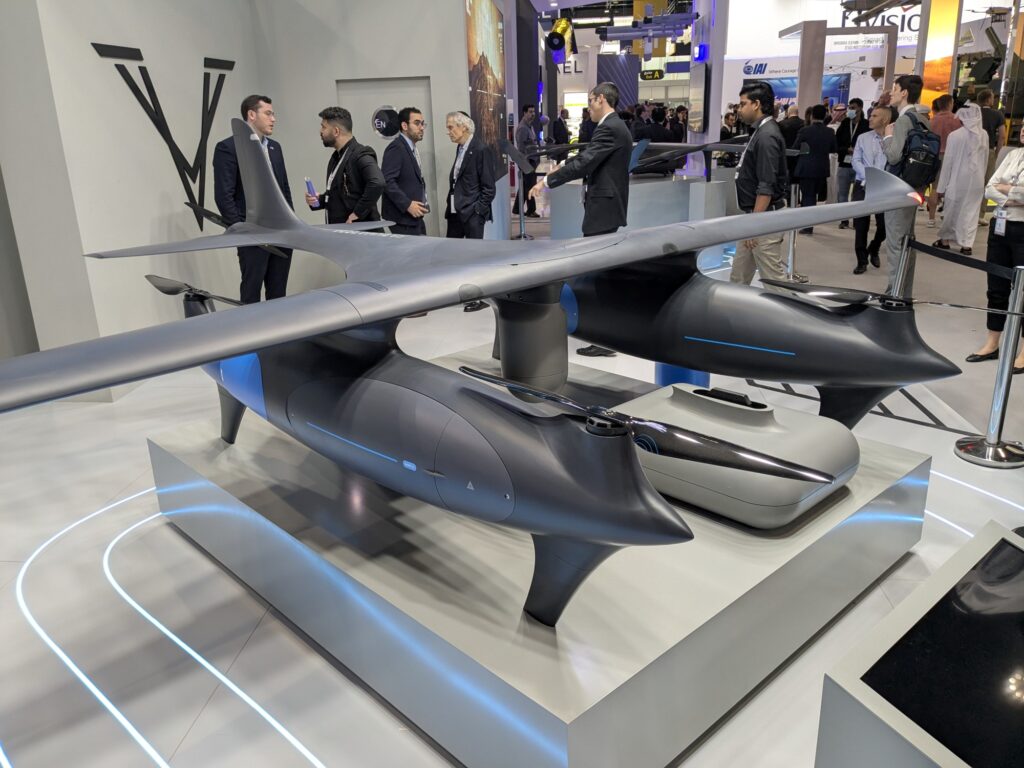IDEX 2025: Heven Drones unveils new hydrogen-powered UAV called the Raider
Peter Felstead
Heven Drones, which is headquartered in Miami but has a research and development facility in Carmel, Israel, unveiled a new hydrogen-powered unmanned aerial vehicle (UAV) called the Raider at the IDEX 2025 defence exhibition, held in Abu Dhabi from 17-21 February.
Speaking to ESD at IDEX 2025, Benzion Levinson, founder & CEO of Heven Drones, said the Raider, which has a 7 m wingspan and a maximum take-off weight (MTOW) of 119 kg, has a 23 kg payload, a 12-hour endurance and a range of more than 1,000 km.
The platform has a modular twin-boom fuselage design that enhances aerodynamic stability and allows for quick adaptation to various operational profiles without the need for extensive recalibration. While propelled in forward flight by a pusher propeller at the rear, the Raider can take off and land vertically using four propellers mounted on the twin-boom fuselage, allowing deployment from difficult terrain. The Raider also has a modular battery system for enhanced hovering capabilities to further ensure its usability in the field and can be assembled in 15 minutes.
Being hydrogen powered, the Raider offers near-silent operation with ultra-low thermal radiation and acoustic signatures, enabling discreet use in sensitive missions. Its ability to monitor large areas with multi-platform, multi-sensor configurations make it especially valuable for persistent surveillance and maintaining force protection, while hydrogen generation at the launch site provides a UAV capability with energy independence, ensuring continuous operations in remote or resource-limited environments. Levinson noted to ESD that the Raider’s hydrogen generation unit is small enough to be trailer mounted and towed by a Humvee-sized tactical vehicle.
The Raider is designed to address a number of different missions, including tactical intelligence, surveillance and reconnaissance; acting as a logistics platform in contested environments, and also delivering launched effects. According to Heven Drones literature, the UAV has been engineered for reliability and can fly operationally for 1,000 hours between overhauls, reducing maintenance demands and improving operational readiness.
Regarding future milestones for the Raider, Levinson told ESD, “It’s going to be flying later this year and operational next year.”
Asked why hydrogen-powered UAVs have not been more widely adopted, Levinson told ESD that they present a lot of technical challenges, but that Heven Drones has had a team of 50 specialists overcoming these over the last four years.
The Raider, in fact, follows on from Heven Drones’ H2D250 hydrogen-powered UAV. This is a smaller aircraft with an MTOW of 25 kg and a payload capacity of 4.5, but also featuring an endurance of more than 10 hours, that is already operational with multiple customers.
Levinson noted to ESD that Heven Drones “is the official sole-source supplier of hydrogen-powered UAVs to the Israel Defense Forces” and that the H2D250 also features the US special forces community among its user base. US forces, said Levinson, were particularly focused on the H2D250’s combination of range/endurance and energy independence for operations in the Indo-Pacific region.







